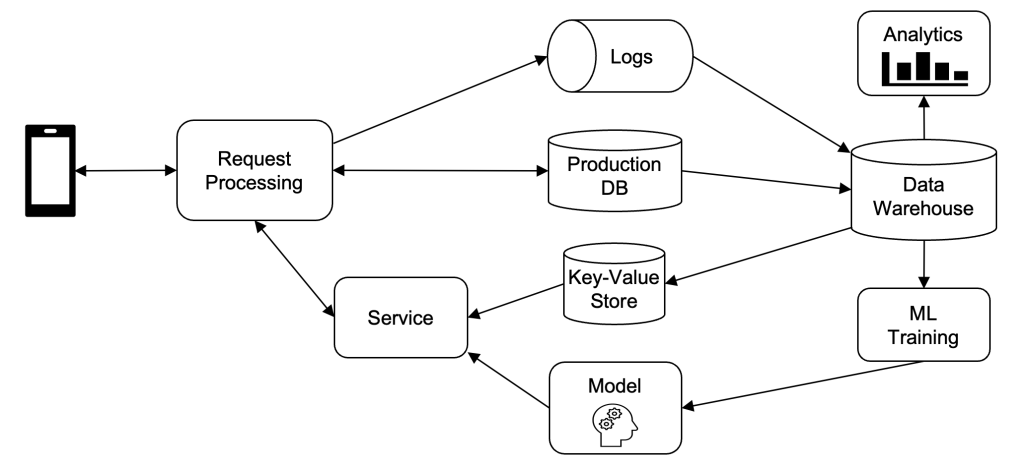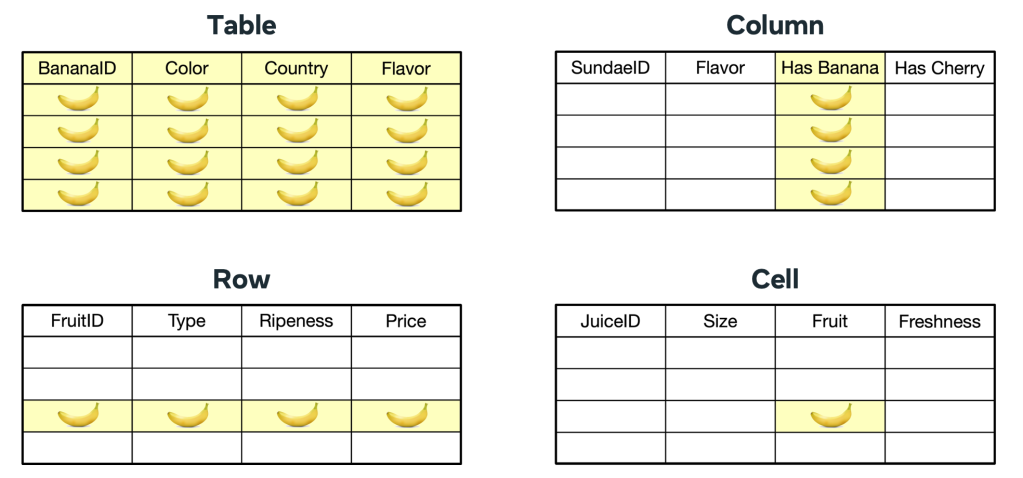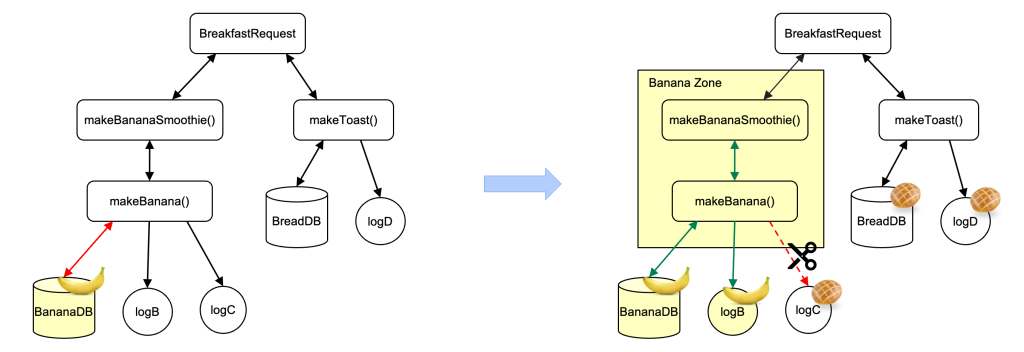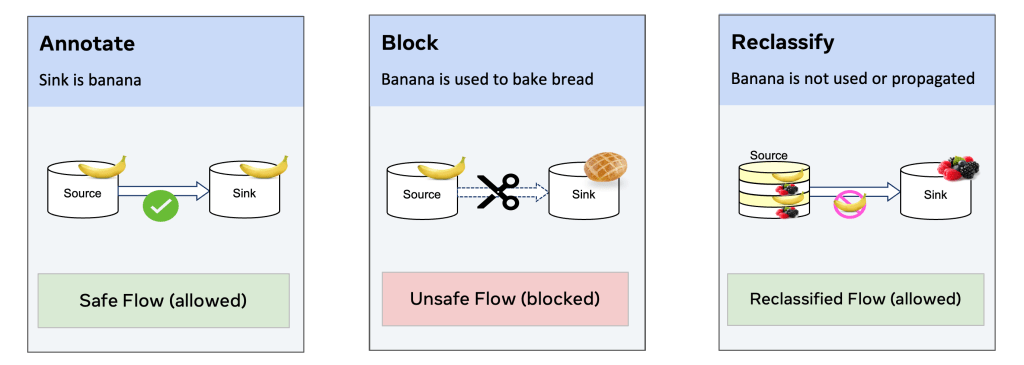- At Meta, we’ve been diligently working to include privateness into totally different methods of our software program stack over the previous few years. Right this moment, we’re excited to share some cutting-edge applied sciences which might be a part of our Privateness Conscious Infrastructure (PAI) initiative. These improvements mark a serious milestone in our ongoing dedication to honoring person privateness.
- PAI provides environment friendly and dependable first-class privateness constructs embedded in Meta infrastructure to handle advanced privateness points. For instance, we constructed Coverage Zones that apply throughout our infrastructure to handle restrictions on knowledge, resembling utilizing it just for allowed functions, offering robust ensures for limiting the needs of its processing.
- As we expanded PAI throughout Meta, growing its maturity, we gained useful insights. Our understanding of the expertise developed, revealing the necessity for a bigger funding than initially deliberate to create a cohesive ecosystem of libraries, instrument suites, integrations, and extra. These investments have been essential in implementing advanced function limitation eventualities whereas guaranteeing scalability, reliability, and a streamlined developer expertise.
Function limitation, a core knowledge safety precept, is about guaranteeing knowledge is simply processed for explicitly said functions. An important facet of function limitation is managing knowledge because it flows throughout methods and providers. Generally, function limitation can depend on “level checking” controls on the level of knowledge processing. This method includes utilizing easy if statements in code (“code property”) or entry management mechanisms for datasets (“knowledge property”) in knowledge methods. Nonetheless, this method will be fragile because it requires frequent and exhaustive code audits to make sure the continual validity of those controls, particularly because the codebase evolves. Moreover, entry management mechanisms handle permissions for various datasets to mirror varied functions utilizing mechanisms like entry management lists (ACLs), which requires the bodily separation of knowledge into distinct property to make sure every maintains a single function. When Meta began to handle extra and larger-scope function limitation necessities that crossed dozens of our methods, these level checking controls didn’t scale.
At Meta, hundreds of thousands of knowledge property are essential for powering our product ecosystem, optimizing machine studying fashions for personalised experiences, and guaranteeing our merchandise are prime quality and meet person expectations. Figuring out which code branches and knowledge property require safety is difficult as a consequence of advanced propagation necessities and permissions fashions that want fixed revision. For instance, when a knowledge shopper reads from one knowledge asset (“supply”) and shops the output in one other (“sink”), level checking controls would require advanced orchestration to make sure propagation from sources to sinks, which may change into operationally unviable.

To deal with this downside, level checking controls will be enhanced by leveraging knowledge circulate alerts. Knowledge flows will be tracked from the identical origin, the place related knowledge is collected, utilizing varied strategies resembling static code evaluation, logging, and post-query processing. This creates a graph, referred to as “knowledge lineage,” that tracks the relationships between supply and sink knowledge property. By using knowledge lineage, permissions will be utilized to related knowledge property primarily based on these source-to-sink relationships. The mix of level checking and knowledge lineage, whereas viable at a small scale, results in important operational overhead as level checking nonetheless requires auditing many particular person property.
Constructing on these insights, in our newest iteration, we discovered that the data circulate management (IFC) mannequin provides a extra sturdy and sustainable method by controlling not solely knowledge entry but in addition how knowledge is processed and transferred in real-time, fairly than counting on level checking or out-of-band audits. Thus, we developed Coverage Zones as our IFC-based expertise and built-in it throughout main Meta methods to boost our function limitation capabilities at scale. This effort was later expanded into the Privateness Conscious Infrastructure (PAI) initiative, a transformative funding that integrates first-class privateness help into Meta’s infrastructure methods.
We imagine PAI is the precise funding to guard folks’s privateness at scale and may successfully implement function limitation necessities.
Why spend money on Coverage Zones?
By way of our expertise deploying function limitation options over time, we recognized a number of key themes:
| Wants | Drawback | Answer |
| Programmatic Management: We wanted to rely extra on programmatic controls as a substitute of level checking human audits to manage knowledge flows, and accomplish that in real-time | Conventional level checking controls, mixed with knowledge lineage checks, can detect knowledge transfers inside a selected timeframe however not in real-time. Addressing these dangers requires implementing resource-intensive human audits at entry factors. | In distinction, PAI is designed to verify knowledge flows in real-time throughout code execution, blocking problematic knowledge flows from occurring, facilitated by UX tooling, thus making it extra scalable. |
| Granular Circulation Management: We wanted to maximise the reuse of present knowledge and enterprise logic on advanced infra | Entry management is simple to roll out when knowledge is separated bodily, however poses important prices, complexity, and limitations when coping with Meta’s advanced infrastructure, the place knowledge for various functions is commonly processed by shared code. | PAI solves this by offering exact choice making on the granular degree of particular person requests, perform calls, or knowledge components, attaining logical knowledge separation at a comparatively low compute value even on advanced infrastructures the place it’s wanted. |
| Adaptable and Extensible Management: We wanted to deal with ever-evolving necessities, even a number of for a similar knowledge property | We face a quickly altering world for privateness. Knowledge use restrictions can differ over time relying on evolving privateness and product necessities. A single knowledge asset or totally different elements of it is likely to be topic to a number of privateness necessities. Whereas “level checking” can deal with this to some extent, it struggles to manage downstream knowledge flows, even mixed with knowledge lineage. | PAI is designed to verify a number of necessities concerned in knowledge flows and is extremely versatile to adapt to altering necessities. |
How Coverage Zones works
Let’s dive into what Coverage Zones is and the way we will leverage it to satisfy function limitation necessities. Coverage Zones gives a complete mechanism for encapsulating, evaluating, and propagating privateness constraints for knowledge each “in transit” and “at relaxation,” together with transitions between totally different methods. It conducts runtime analysis of constraints, context propagation, and is deeply built-in with quite a few knowledge and code frameworks (e.g., HHVM, Presto, and Spark), representing a step change in how we method data circulate management.
To make the reason extra relatable and convey some levity to a critical subject, we’ll use a easy instance: Let’s say a brand new requirement comes up, the place banana knowledge can solely be used for the needs of creating smoothies and fruit baskets, however not for making banana bread. For simplicity, this instance and the illustration beneath solely display the primary row of the above desk.

How would builders leverage Coverage Zones to implement such a requirement?
First, to demarcate related knowledge property, they assign a metadata label (“knowledge annotation,” e.g., BANANA_DATA) to knowledge property at totally different granularities. This annotation is related to the aim limitation requirement as a set of knowledge circulate guidelines that allow methods to grasp the allowed functions for the information.

When annotated knowledge is processed, Coverage Zones kicks in and checks whether or not the information processing is allowed and knowledge can circulate downstream. Coverage Zones has been constructed into totally different Meta methods, together with:
- Perform-based methods that load, course of, and propagate knowledge via stacks of perform calls in several programming languages. Examples embody internet frontend, middle-tier, and backend providers.
- Batch-processing methods that course of knowledge rows in batch (primarily through SQL). Examples embody real-time and knowledge warehouse methods that energy Meta’s AI and analytics workloads.
Let’s dive deeper into how Coverage Zones works for the function-based methods, whereas the identical logic applies to the batch-processing methods as nicely.
In function-based methods, knowledge is handed via parameters, variables, or return values in a stack of perform calls.
Let’s stroll via an instance:
- An internet request, “BananaRequest,” masses annotated knowledge from BananaDB, inflicting a knowledge circulate violation as a result of the intent of the caller is unknown.
- To remediate the information circulate violation, we annotate BananaRequest with the BANANA_DATA label, making a zone (“Banana Zone”) for the request.
- Behind the scenes at runtime, Coverage Zones programmatically checks all knowledge flows in opposition to the circulate guidelines primarily based on the context, flagging new knowledge circulate violations from BananaRequest to logB and logC.
- We annotate logB as banana and take away the logging of banana knowledge into logC to chop off the disallowed knowledge circulate.
- With all knowledge circulate violations remediated, the zone will be moved from logging mode to enforcement. If a developer provides a write to a sink outdoors of the zone, it is going to be blocked mechanically.

In a extra advanced state of affairs, a perform, “makeBananaSmoothie()” from an online request, “BreakfastRequest” calls one other perform, “makeBanana().” Moreover the earlier knowledge circulate violations, we have to remediate one other knowledge circulate violation: makeBanana() returns banana knowledge to makeBananaSmoothie(). This implies we will create a “Banana Zone” from the perform makeBananaSmoothie() that features all features that it calls instantly or not directly.

In batch-processing methods, knowledge is processed in batches for rows from tables which might be annotated as containing related knowledge. When a job runs a question (normally SQL-based) to course of the information, a zone is created and Coverage Zones flags any knowledge circulate violations. Remediation choices are supplied, much like these for function-based methods. As soon as all violations have been remediated, the zone will be moved from logging mode to enforcement mode to forestall future knowledge circulate violations. Knowledge annotation will be performed at varied ranges of granularity, together with desk, column, row, or doubtlessly even cell.
When knowledge flows throughout totally different methods (e.g., from frontend, to knowledge warehouse, then to AI), Coverage Zones ensures that related knowledge is annotated appropriately and thus continues to be protected in response to the necessities. For some methods that don’t have Coverage Zones built-in but, the purpose checking management remains to be used to guard the information.
How we utilized PAI to present methods at scale
The above offers you a glimpse into how the expertise is used to roll out a easy use case. Nonetheless, adopting Coverage Zones is a non-trivial process for advanced necessities throughout tens or a whole lot of methods. The requirement proprietor normally collaborates with different engineers who’re code and knowledge asset homeowners throughout Meta to implement totally different points of that requirement. In some instances, this may increasingly contain a whole lot or 1000’s of engineers to finish the implementation and audits. To deal with this problem, PAI provides Coverage Zone Supervisor (PZM), a set of UX instruments that helps requirement homeowners to effectively implement privateness necessities utilizing PAI.
Let’s check out how PZM makes it simple for folks to fulfill their function limitation wants in present methods, utilizing the above banana requirement for example. At a excessive degree, the requirement proprietor carries out the next workflow, facilitated by PZM:
- Establish related property: That is to determine which supply property must be function restricted for the given requirement.
- Uncover related knowledge flows: That is to find the downstream knowledge flows from the supply property to be able to combine Coverage Zones at scale.
- Remediate knowledge circulate violations: That is to permit folks to decide on which choice to take to remediate knowledge circulate violations.
- Constantly implement and monitor knowledge flows: That is to activate Coverage Zones enforcement and monitor it to forestall new knowledge circulate violations.

To listen to extra about this course of, try our presentation on the PEPR convention in June 2024.
Step 1 – Establish related property
For a given requirement, we verify the related product entry factors (e.g., cell apps, internet requests, and databases) to pinpoint knowledge property which might be collected. These property could take the type of request parameters, database entries, or occasion log entries. We use knowledge constructions to signify (“schematize”) these knowledge property and fields, capturing related knowledge at varied granularities. Within the operating instance, a desk within the banana database may include totally banana knowledge, a single banana column, or a mixture of banana and different fruit knowledge.
Along with handbook code inspection, we closely depend on varied strategies resembling our scalable ML-based classifier to mechanically determine knowledge property.
Step 2 – Uncover related knowledge flows
From a given annotated supply, the requirement proprietor can determine its downstream knowledge flows and sinks (see diagram beneath). The proprietor can then determine learn how to deal with these knowledge flows. Nonetheless, this course of will be time consuming when there are lots of knowledge flows which might be one or a number of hops away from the identical origin. This usually happens when implementing a brand new requirement over present knowledge flows.

Though knowledge lineage presents important operational overhead for level checking mechanisms, it may effectively determine the place to combine Coverage Zones into the codebase. Due to this fact, we’ve got built-in knowledge lineage into PZM, permitting requirement homeowners to find a number of downstream property from a given supply concurrently. As soon as the requirement has been absolutely carried out, we will rely solely on Coverage Zones to implement the necessities.
Step 3 – Remediate knowledge circulate violations
By default, the information circulate from a supply asset to a sink should meet all the necessities of the supply. If not, it’s thought-about a knowledge circulate violation and wishes remediation, enforced by Coverage Zones programmatically at runtime. There are three important instances to remediate knowledge circulate violations (utilizing the operating instance to assist concretize the final instances):
- Case 1: Protected circulate – related knowledge is used for allowed function(s): Assign the banana annotation to the sink asset.
- Case 2: Unsafe circulate – related knowledge is used for disallowed function(s): Block knowledge entry and code execution to forestall additional processing of banana knowledge.
- Case 3: Reclassified circulate – related knowledge will not be used or propagated: Annotate the information circulate as reclassified as being permitted. Banana knowledge from the supply will not be used or propagated to the sink.

Step 4 – Constantly implement and monitor knowledge flows
PAI is built-in into our main knowledge methods to verify knowledge flows and catch violations at runtime. In the course of the preliminary rollout of a brand new requirement, Coverage Zones will be configured to permit remediations of circulate violations in “logging mode.” As soon as Coverage Zones enforcement is enabled, any knowledge circulate with unremediated violations is denied. This additionally prevents new knowledge circulate violations, even when code modifications or new code is added.
PAI constantly displays the enforcement of necessities to make sure that it operates appropriately. PZM gives a set of verifiers to verify the accuracy of asset annotations and management configurations.
Classes discovered from adoption at scale throughout Meta
As PAI has been adopted by a mess of function limitation necessities throughout Meta, we’ve discovered a number of key classes over the previous few years:
Concentrate on fixing one particular end-to-end use case first
Initially, we developed Coverage Zones for batch-processing methods with some primary use instances. Nonetheless, we realized that our designs for function-based methods have been fairly summary and the adoption for a large-scale use case resulted in important challenges, consequently, requiring appreciable effort to map patterns to buyer wants. Moreover, refining the APIs and constructing lacking operational help made it work successfully end-to-end throughout a number of methods. Solely after addressing these challenges have been we capable of make it extra generic and proceed with integrating Coverage Zones throughout intensive platforms.
Streamline integration complexity
Integrating PAI into main Meta methods coherently was a fancy, prolonged, and difficult course of. We encountered important difficulties in integrating PAI with Meta’s numerous methods broadly. It took us years to beat these challenges. For instance, initially, product groups expended appreciable effort to schematize knowledge property throughout totally different knowledge methods. Then we developed dependable, computationally environment friendly, and extensively relevant PAI libraries in varied programming languages (Hack, C++, Python, and so on.) that enabled a smoother integration with a broad vary of Meta’s methods.
Spend money on computational and developer effectivity early on
We additionally undertook a number of iterations to simplify PAI and enhance its computational effectivity. Our preliminary annotation APIs have been overly advanced, leading to excessive cognitive overhead for engineers. Moreover, the computational overhead of knowledge circulate checking was prohibitively excessive in Meta’s high-throughput methods. By way of a number of rounds of refinement, we simplified coverage lattice illustration and analysis, constructed language-level options to natively propagate Coverage Zones context, and canonicalized coverage annotation constructions, attaining 10x enhancements in computational effectivity.
Simplified and unbiased annotations are a should to scale to a variety of necessities
Initially, we employed a monolithic annotation API to mannequin intricate knowledge circulate guidelines and annotate related code and knowledge. Nonetheless, as knowledge from a number of necessities have been mixed, propagating these annotations from sources to sinks grew to become more and more advanced, leading to knowledge annotation conflicts that have been troublesome to resolve. To deal with this problem, we carried out simplified knowledge annotations to decouple knowledge from necessities and separate knowledge circulate guidelines for various necessities. This considerably streamlined the annotation course of, finally bettering developer experiences.
Construct instruments; they’re required
We’ve got made important efforts to make sure using PAI is simple and environment friendly, finally bettering the developer expertise. Initially, we targeted on the correctness of the expertise first earlier than investing in tooling. Adopting Coverage Zones required lots of handbook effort, and it was difficult for engineers to grasp learn how to correctly annotate their property, which led to extra cleanup work later. To deal with this problem, we developed the PZM instrument household, which incorporates built-in automated guidelines and classifiers. These instruments information groups via normal workflows, guaranteeing secure and environment friendly rollout of function limitation necessities and decreasing engineering efforts by orders of magnitude.
Sturdy privateness safety for everybody
Meta is dedicated to defending person privateness. The PAI initiative is a vital step in safeguarding knowledge and preserving privateness effectively and reliably. It gives a strong basis for Meta to sustainably deal with privateness challenges, meet excessive reliability requirements, and deal with future privateness points extra effectively than conventional options. Whereas we’ve laid a robust groundwork, our journey is simply starting. We intention to construct upon this basis by increasing our capabilities and controls to accommodate a wider vary of privateness necessities, enhancing the developer expertise, and exploring new frontiers.
We hope our work sparks innovation and fosters collaboration throughout the business within the area of privateness.
Acknowledgements
The authors want to acknowledge the contributions of many present and former Meta staff who’ve performed a vital function in productionizing and adopting PAI over time. Specifically, we want to lengthen particular because of (in alphabetical order) Adrian Zgorzalek, Alex Gorelik, Amritha Raghunath, Anuja Jaiswal, Brian Sniffen, Brian Romanko, Brian Spanton, David Detlefs, David Mortenson, David Taieb, Gabriela Jacques da Silva, Ian Carmichael, Iuliu Rus, Jafar Husain, Jerry Pan, Jiang Wu, Joel Krebs, Jun Fang, Komal Mangtani, Marc Celani, Mark Konetchy, Michael Levin, Perry Stoll, Peter Prelich, Pieter Viljoen, Prashant Dhamdhere, Rajesh Nishtala, Rajkishan Gunasekaran, Rishab Mangla, Sergey Doroshenko, Seth Silverman, Sriguru Chakravarthi, Tarek Sheasha, Thomas Georgiou, Uday Ramesh Savagaonkar, Vitalii Tsybulnyk, Vlad Fedorov, Wolfram Schulte, and Yi Huang. We might additionally like to specific our gratitude to all reviewers of this submit, together with (in alphabetical order) Aleksandar Ilic, Benjamin Renard, Emil Vazquez, Emile Litvak, Harrison Fisk, Jason Hendrickson, Jessica Retka, Nimish Shah, Sabrina B Ross, and Sam Blatchford. We want to particularly thank Emily DiPietro for championing the thought, main the editorial effort, and pulling all required help collectively to make this weblog submit occur.
